How to Identify a Western Bluebird
Updated: Feb. 21, 2024
Learn the field marks that distinguish a male and female western bluebird. Beckon them to your yard with nest boxes and mealworms.
On This Page
What Do Male and Female Western Bluebirds Look Like?
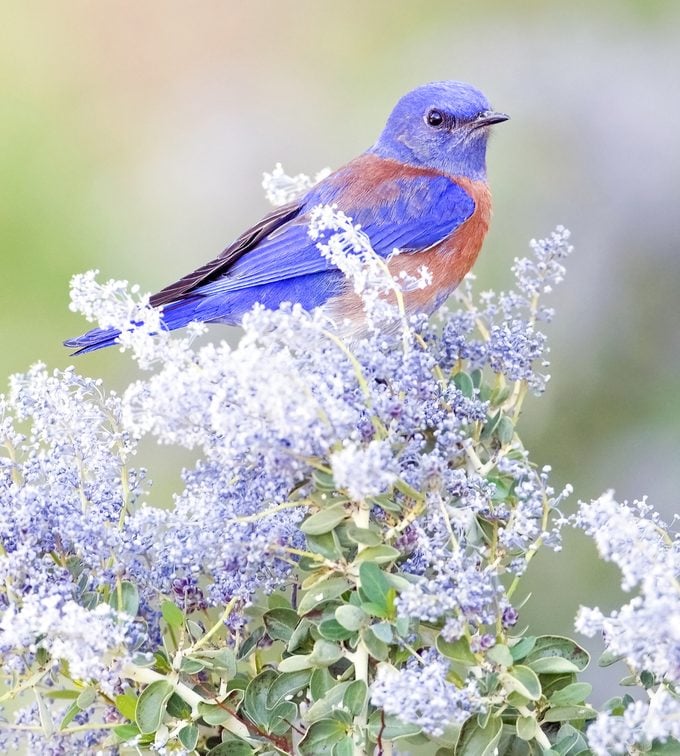
Nothing brightens a backyard quite like a western bluebird. “The blue feathers of a western bluebird sparkle,” says Joyce Volmut, coordinator for Olympic Peninsula Audubon’s western bluebird survey. “They have a real personality. They are comfortable around people, and their color is absolutely fantastic.”
The western bluebird is one of three bluebird species found in North America. True to the name, western bluebirds are West Coast birds that also appear in regions across the West and down south into Mexico.
Male mountain bluebirds are predominantly blue, but male eastern and western bluebirds are more difficult to tell apart because they both have blue and orange plumage. It’s a male western bluebird if it has a blue belly, throat and face.
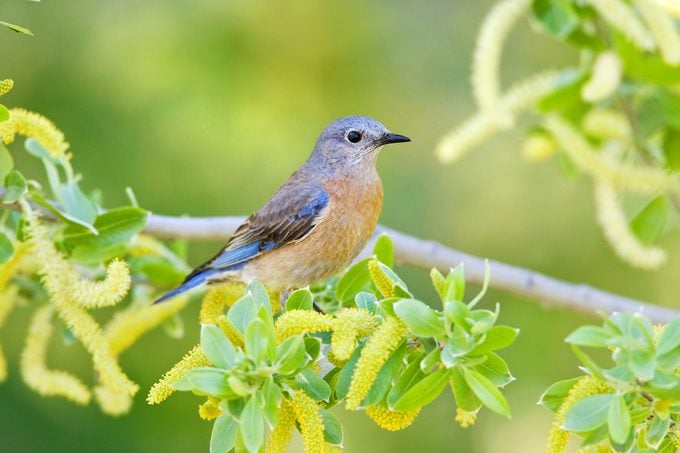
Female western bluebirds lack the bold coloring of males, but look for their blue-tinted wings and tails, and faint orange shading on the breast.
Marvel at these gorgeous pictures of bluebirds — then say “awwwwww!” at these adorable baby bluebirds.
What Does a Western Bluebird Eat?
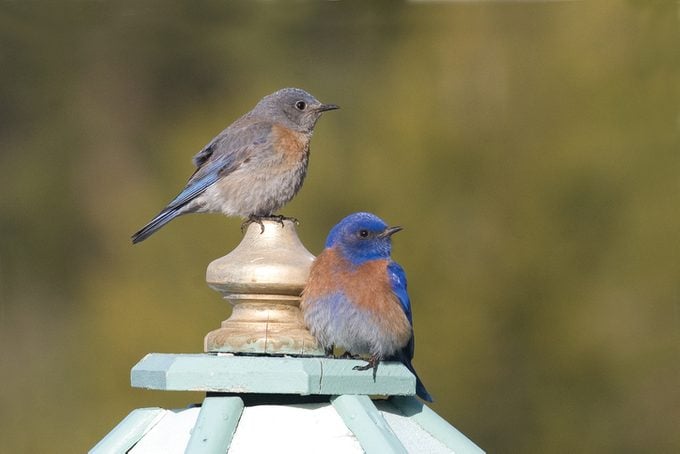
Though western bluebirds eat many berries during the winter, they are primarily insectivores. Their young feed exclusively on bugs. “They’re entertaining to watch, catching insects on the fly,” Joyce says. “Putting out mealworms is a great way to attract them. Likewise, avoid insecticides or pesticides.”
A western bluebird barely tips the scale at just one ounce. To keep their slim figures, they eat about 15 calories a day, or 23 if they are caring for a brood.
With some mealworms or even bluebird feeders, these birds can add bright blue joy to your yard while providing hours of entertainment.
Get more tips on how to attract bluebirds.
Nesting Habits
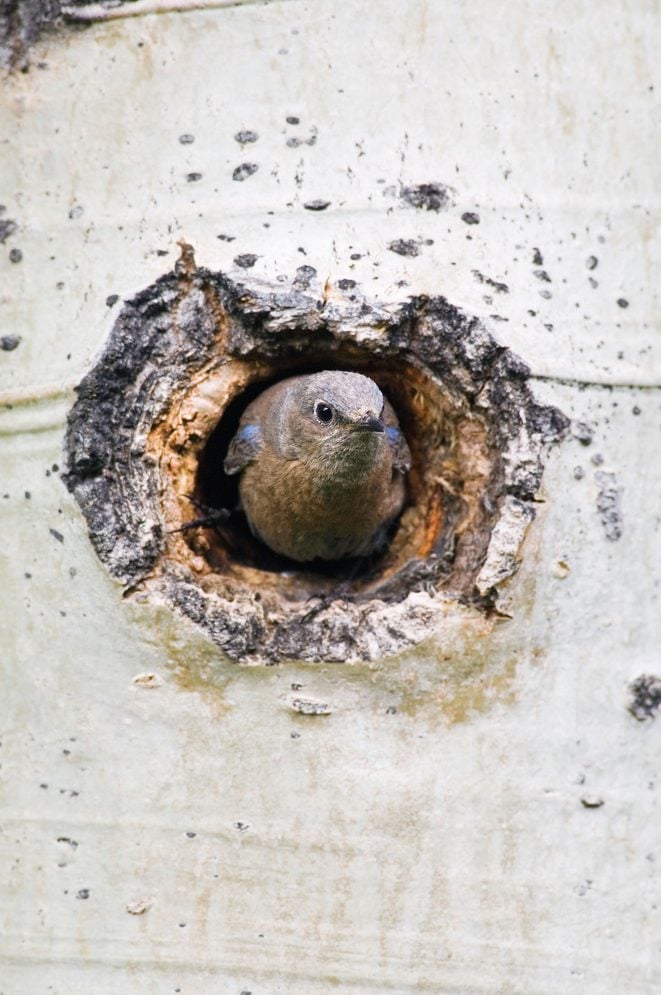
These bluebirds nest early, starting to look for a nest site in February or early March, but don’t actually lay eggs until April. Though western bluebirds are cavity nesters, they don’t make the holes for themselves. Instead, they use woodpecker holes and other existing hollows, often in dead trees.
According to Joyce, you can lure western bluebirds to your yard with nest boxes if the boxes are in a clearing near trees with a bird bath or creek close by. Westerns don’t prefer big open meadows or large bodies of water. A nest box should be constructed of rough wood that is 5 inches square by 8 inches deep with a 1½-inch hole. Place the box on a free-standing pole, at least 5 feet above the ground.
Here’s how to build a DIY bluebird house.
“Note where the wind mainly comes from, then face the hole in the opposite direction,” Joyce says. “If the wind is from the north, the hole should face south. They aren’t an urban bird, so the box needs to be in an outlying area.”
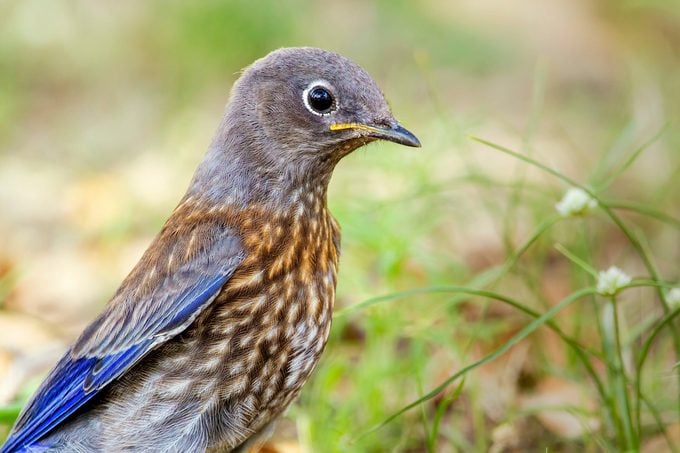
Western bluebirds may look like sweet blue songbirds, but they will ferociously defend their nests. For this reason, Joyce suggests putting up more than one box if possible, spacing them 100 to 200 feet apart. Then, westerns can peacefully raise their broods, one to three per year, next to their neighbors.
Most birds mate for a breeding season or nesting period, but that kind of monogamy is less appealing to western bluebirds. Researchers discovered that 45 percent of nests held young that were not fathered by the male who defended the nest, and 19 percent of all chicks were not the defending male’s.
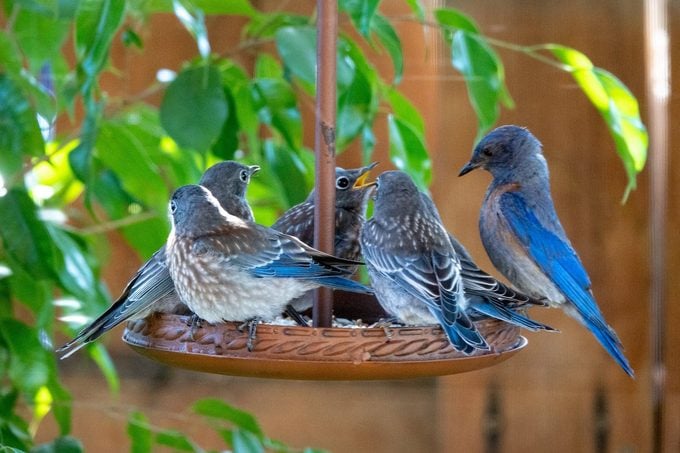
Some western bluebird parents get extra parenting support. These assistants, which help feed and protect the new hatchlings, are usually offspring from a previous brood.
Juvenile western bluebirds have spotted backs to match their marked bellies, and the blue tint of their wings and tails also helps ID them.
Learn how to keep house sparrows out of bluebird boxes.
Western Bluebird Song
Bird songs courtesy of the Cornell Lab of Ornithology
Western Bluebird Habitat and Range Map
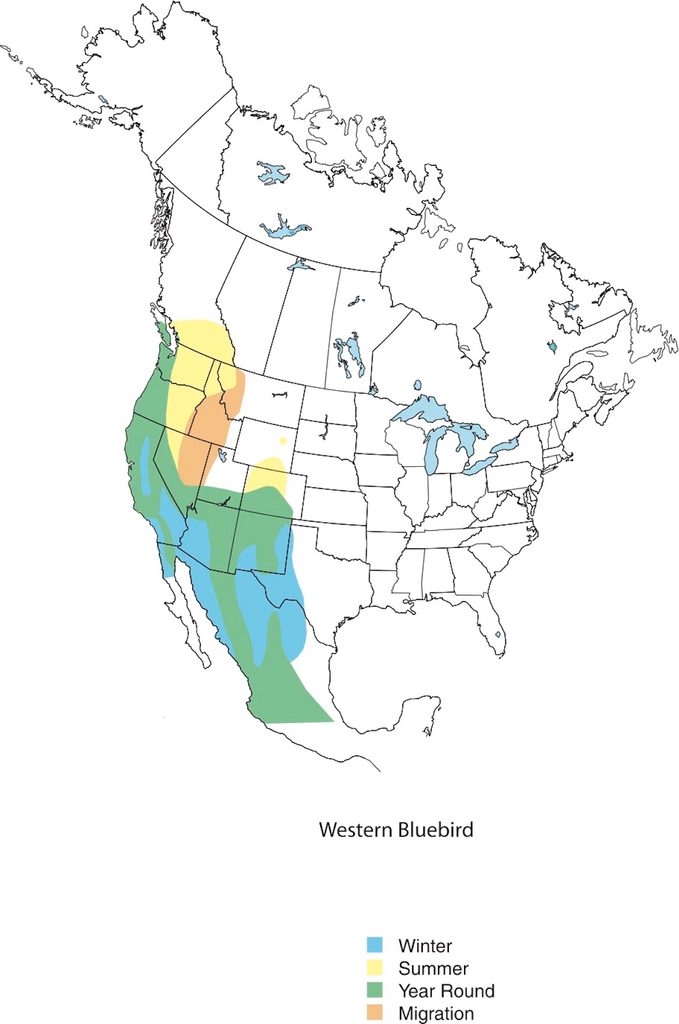
Range maps provided by Kaufman Field Guides, the official field guide of Birds & Blooms.
These small, vibrantly colored members of the thrush family are only partial or short-distance migrants. When they find a place they like, they’ll often stick around year after year.
This species breeds in the west. It replaces the eastern bluebird in areas west of the Great Plains. In the Southwest, it’s mostly a bird of foothills and mountains. Along the Pacific Coast, it lives in parks and yards. According to the Cornell Lab of Ornithology, western bluebirds are less commonly spotted in meadows than the other two bluebird species.
Western bluebirds spend winter in various kinds of open woods. They may gather in large flocks, especially in foothills with juniper berries; they also move out into desert areas.
About the Expert
Joyce Volmut is a Climate Watch Coordinator for Olympic Peninsula Audubon Society. Collecting data from participants in Audubon’s Climate Watch program, she plays a vital role in monitoring Audubon’s selected target bird populations—including western bluebirds.
Sources
- Cornell Lab of Ornithology, All About Birds: Western Bluebird
- National Audubon Society, Western Bluebird
- Montana Field Guide, Western Bluebird
- Audubon California, Western Bluebird Boxes
Why Trust Us?
For nearly 30 years, Birds & Blooms, a Trusted Media Brand, has been inspiring readers to have a lifelong love of birding, gardening and nature. We are the #1 bird and garden magazine in North America and a trusted online resource for over 15 million outdoor enthusiasts annually. Our library of thousands of informative articles and how-tos has been written by trusted journalists and fact-checked by bird and garden experts for accuracy. In addition to our staff of experienced gardeners and bird-watchers, we hire individuals who have years of education and hands-on experience with birding, bird feeding, gardening, butterflies, bugs and more. Learn more about Birds & Blooms, our field editor program, and our submission guidelines.


